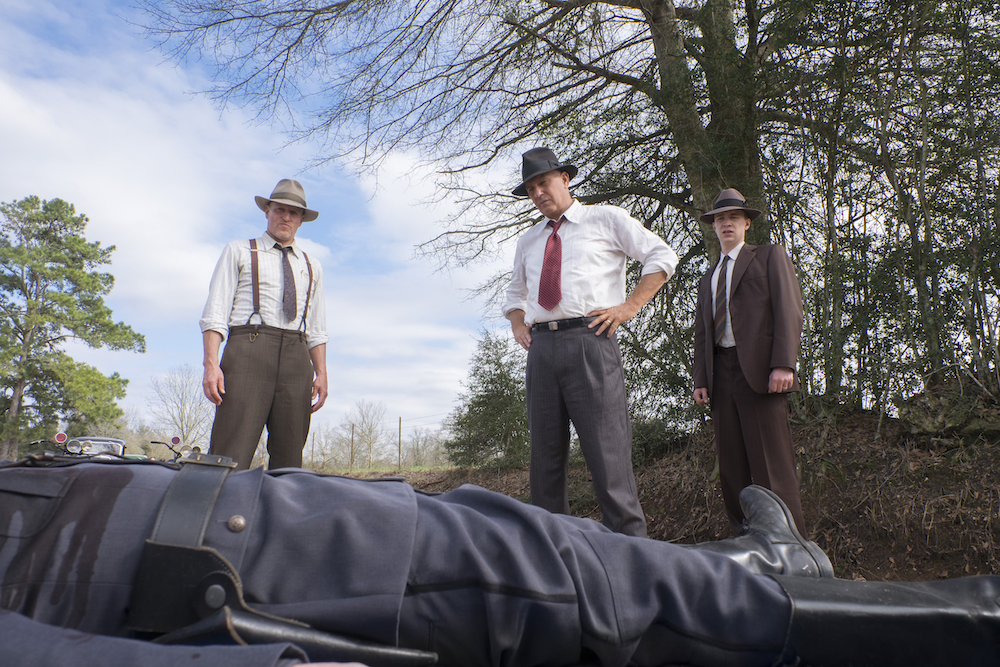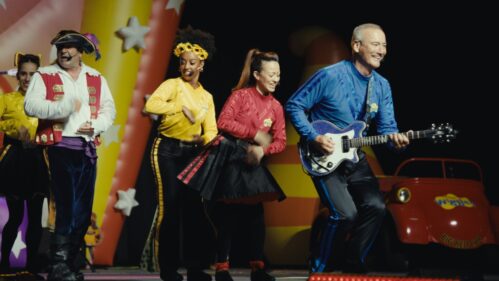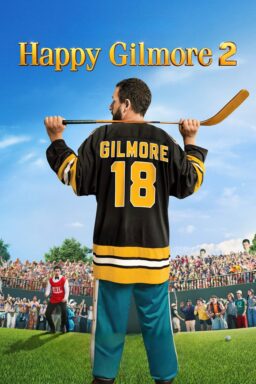Just about everyone can tell you the names, at least the first names, of the notorious couple who robbed banks, stores, and gas stations in the early 1930s until they were gunned down by law enforcement. Bonnie and Clyde have been immortalized on film half a dozen times, including the Arthur Penn classic starring Faye Dunaway and Warren Beatty, and in other media, recently a Taylor Swift song and an episode of “Rap Battles of History.” But writer John Fusco and director John Lee Hancock think the focus of the story should be on the former Texas Rangers who tracked them down. Their new movie, “The Highwaymen” stars Kevin Costner as Frank Hamer and Woody Harrelson as Maney Gault, with Kathy Bates as the bombastic Texas governor Ma Ferguson.
In an interview with RogerEbert.com they talked about how the two characters contrast with and balance each other and how historical films are always more a reflection of the time they are made than the time they are depicting.
John Fusco, the idea of masculinity is a theme in many of your films, like “Young Guns” and “Hidalgo.” How does this movie address what it means to be a man?
JOHN FUSCO: I don’t think of it so much as masculinity as the kind of rugged individual ethos that hums through the American Western. I have always been fascinated by the American West and the Western. We don’t have an Odyssey or an Illiad in America, so the American Western is sort of the story of the American character. I have also been fascinated by characters who time has passed by.
John Lee Hancock, I want to ask you about the beautifully filmed scene where the men are looking through the house. I was so struck by the image when we see them framed by the mirror on the dresser. What does that scene mean in the context of the film?
JOHN LEE HANCOCK: For me this was always a journey of these two men that were two halves of the same person, with Maney being the conscience of the two. They both know this job. They have a terrible job and a terrible gift, and they know the toll it’s going to take on their soul because they have done it before.
Maney is more the guy who wears it on his sleeve and Frank is the one who pushes it down, even though hopefully by the end of the movie he realizes that it bugs him too, but he’s dealing with it differently. So in that way I think to your prior question, it is kind of an era of masculinity that has passed in terms of that, and what you carry and what you push down.
But the house was always supposed to be—I mean first, hopefully, it’s creepy and scary and all of that, but also showing the two different sides, Frank being the guy who’s completely investigative—he’s looking and he’s looking at the plates on the table, how many plates and how many people are staying here and those kinds of things.

Whereas Maney is drawn into the human side of everything. He even stops and sees the picture of two sisters that look like identical twins. It’s a very quick cut but it draws his eyes. People and humanity interest him. He’s looking at the socks and boots on the floor, yes, in an investigative way but the way he may understood the house is different from Frank. And when they get upstairs we’ve already set up the fact that he says he’s never shot a woman before, and this terrifies him and this is already a shitty job.
But I think when he gets upstairs, and I was all carefully designed with the DP, John Schwartzman, I said, “Here is where they are going to walk, here is what they are going to do and here is what I want over here because this is where Maney is going and Frank is going. Frank’s going to see the cigarettes with the lipstick on them. Maney is going over here to the little dresser with photos from families, and little brushes and things like that and lipsticks.”
Let’s make it harder and harder and harder on him to pull the trigger at the end. And Woody jumped right over that. I told him, “Pick up anything you want or do whatever and the first thing he did was look at the picture and set it down.” And then I also wanted to make sure I had the two mirrors that moved so that I could just played the whole scene.
But it goes to just the differences in personalities, and of course at the end of the scene Maney comes across a hairbrush and he’s pulling fine red hairs out of it, and you can see and this is troubling him greatly. Even to the point where that see Frank, even though Frank gives him hell the whole trip, this time he says, “Are you okay?”
You can see he is concerned, one friend for another, like, “Are you up to this because I am worried about you right now.” And I think the audience should be too.
The decision to show only glimpses of Bonnie and Clyde throughout the film, not their faces until the very end—was that in the script?
JLH: Yes. The idea from the script that John wrote was that we are intercutting with Bonnie and Clyde at times, but we are never getting a good look at them. And so John and my DP and myself said, “Put that on steroids—let’s make it like a graphic novel. Let’s make the colors really bright and poppy, let’s make the frames interesting and let’s make the car shiny and sexy. Let’s build up the fact that these are two very, very, sexy, dangerous people that we are drawn to.” So the very first time you see Bonnie in focus it’s just her foot with the little white shoes going out into a muddy field. And our costume designer Daniel Orlandi said, “I finally get a close up for my clothes and it’s all muddy.” So he’s going in there and scrubbing it out between every take.

I want to know more about Ma Ferguson. She deserves her own movie.
JF: She was a real character and so full of amazing lines, as I was telling Kathy [Bates] that at one point they were trying to introduce Spanish language into the school systems of Texas, and she came in and said, “Look, if English was good enough for Jesus Christ it’s good enough for Texas.” She was colorful and she of course knocked head with Hamer and the old-time Texas Rangers. And she was also believed allegedly to be on the take. As Frank said in the movie, “Why didn’t they just write her a check instead of a jailbreak?” Because she did give out pardons. And so Hamer did not like that, He did not tolerate corrupt politicians.
JLH: When Pa Ferguson, her husband, was the governor, he was sent up for embezzling. He didn’t go to prison but he got put out of his office. And so Ma got the job. And then there was another Governor in between and she decided to run and Pa says, “Yes, we are back.” And she goes “Pa, I’ve got this now, you screwed this up the first time so let me have it by myself the second time.” She’s quite the character.
I talked to Kathy about it when we were doing “The Blind Side.” I said, “You have to play Ma Ferguson,” and she said, “Who is Ma Ferguson?” and I said, “The governor of Texas and one of the first female governors.” And then years passed. And the movie was announced and I get a call right away from Kathy’s agent saying, “You promised her that role,” and I go, “Yes, I did and I will get to it next week and it’s coming.”
What were some of the challenges of evoking the 1930s, and what was it important to get right?
JLH: We had to capture as much as you can in camera. And then you have to erase transformers, and cell towers and stripes in the streets that just didn’t exist in 1934. But more than anything was the casting. We have become for the better an international country. People move to different communities, people married people from other places, and we all start to kind of look more similar. So we were looking for period faces from a time where we weren’t quite as homogeneous yet. All of the extras are cast locally. We cast out of Houston, Wilmington, New Orleans, Shreveport and Dallas for the small speaking roles, and then the other ones all came out of LA.
Why were Bonnie and Clyde so widely admired, and why have they become such glamorous enduring figures?
JLH: They were branding before there was branding. When Bonnie’s picture was published, it started a fashion trend. Today they would have more Instagram followers that Kim Kardashian, and they would tweet more than our President. Bonnie even referred to the people of America as her public.
JF: Clyde wrote a letter to Henry Ford telling him that he likes his car. They were young lovers on the run outside society.
JLH: They were “sticking it to the man who stuck it to me, and so I am going to overlook the fact that you are killing people.”
JF: People projected that Robin Hood thing onto Bonnie and Clyde. But they weren’t really sticking it to the man. They played into it and they both kind of had this little twisted fantasy that they were like movie stars with real guns.
The Arthur Penn version of the story was very much of its time, the 1960s. How is the version of our time now?
JLH: Yes, a historical piece always says more about the time in which it is made. Now with that said, this script didn’t change. So it could have been a Clinton movie, or an Obama movie, or a Trump movie. But you will look at it through the lens of the day.












